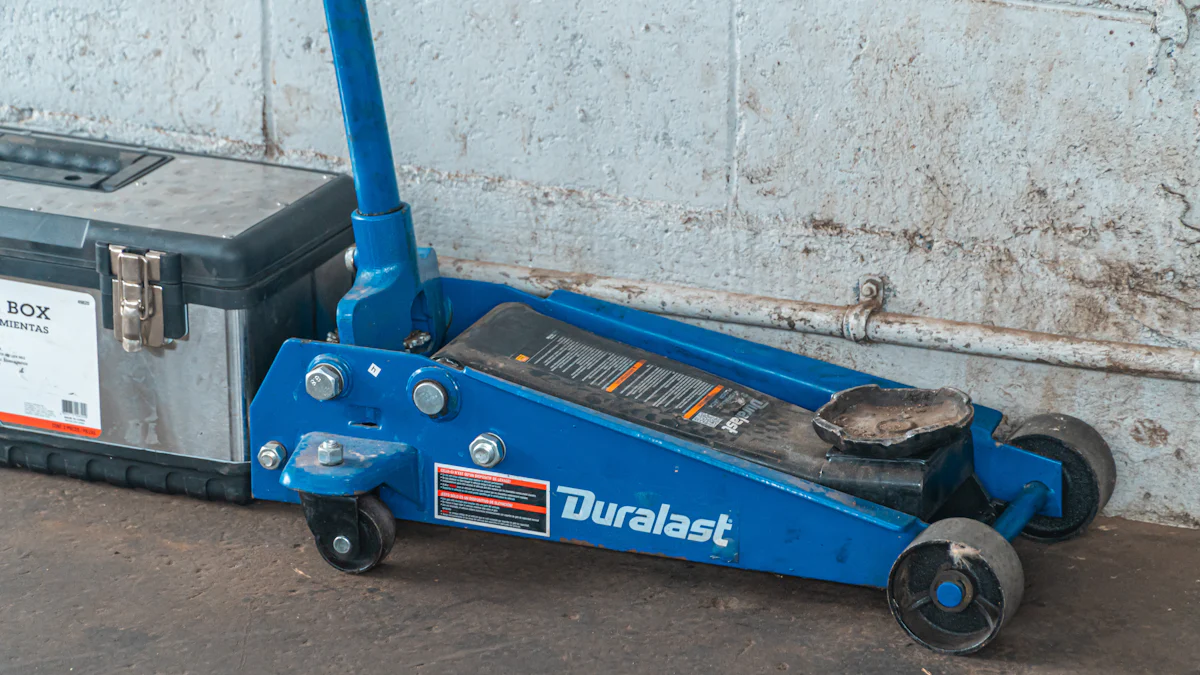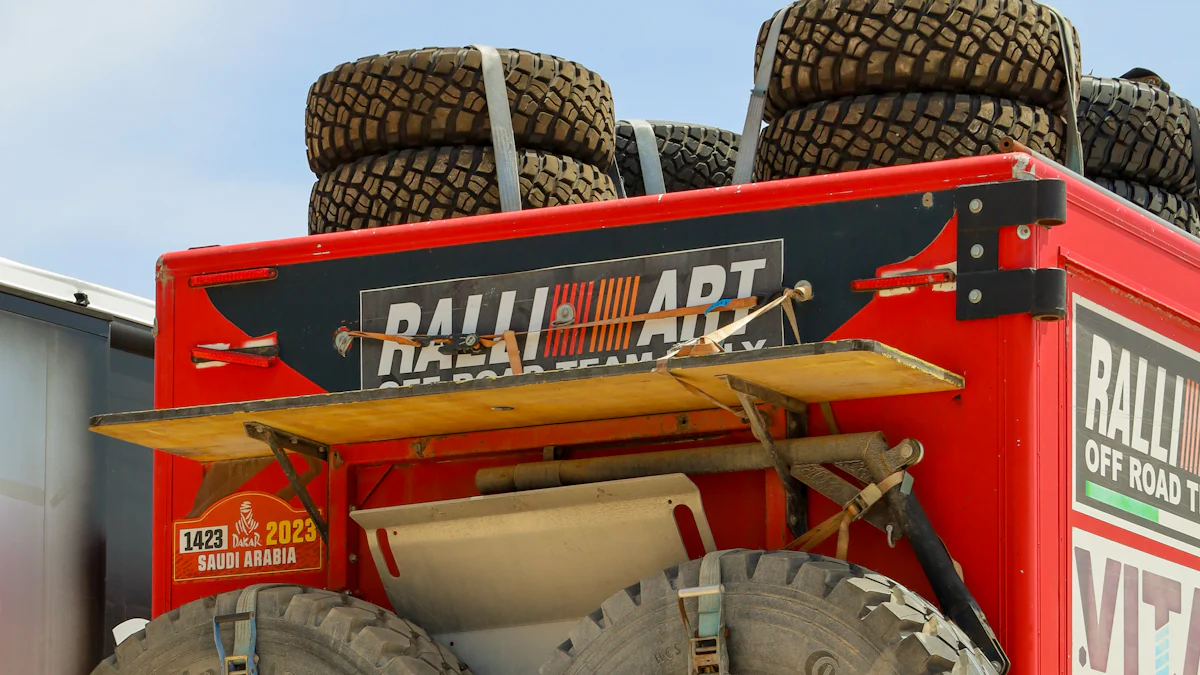
When selecting a manual lift jack or a pallet jack, the stakes are high. Your choice can mean the difference between a smooth operation and potential hazards. To make an informed decision, you must weigh several critical factors. Understanding your vehicle’s weight, ground clearance needs, and jack point compatibility is paramount. This blog will guide you through these considerations methodically to ensure you choose wisely.
Weight Capacity

When considering the manual lift jack that best suits your needs, understanding the weight capacity is crucial. By accurately determining your vehicle’s weight and comprehending the jack’s capacity ratings, you can ensure a safe and efficient lifting process.
Determining Vehicle Weight
To begin, ascertain your vehicle’s weight through reliable sources. Refer to the vehicle manual for precise information on its weight specifications. If the manual is unavailable, utilize online resources to estimate the weight accurately.
Understanding Jack Capacity Ratings
Delve into the manufacturer’s specifications of different jacks to grasp their lifting capabilities. Manufacturers provide detailed information on each jack’s load-bearing capacity and safety margins to prevent overloading.
Matching Jack Capacity to Vehicle Weight
When matching a manual lift jack to your vehicle’s weight, calculate a safety buffer to account for unexpected variations in weight distribution. Consider practical examples where choosing an appropriate jack capacity prevented potential accidents.
By carefully evaluating these factors, you can confidently select a manual lift jack that aligns with your vehicle’s weight requirements and ensures a secure lifting experience.
“The Hi-Lift’s 4,660-pound rating has become the de facto standard for competitors, and in this group its range of lift is second only to the ARB Jack.” – Hi-Lift Jack Review
Ground Clearance
When it comes to selecting the appropriate manual lift jack or pallet jack, understanding the ground clearance requirements is essential for a seamless lifting process. By accurately measuring the ground clearance and determining the lift height needed, you can ensure that your chosen jack aligns perfectly with your vehicle’s specifications.
Measuring Ground Clearance
To begin, gather the necessary tools for measuring the ground clearance effectively. Ensure you have a reliable tape measure and a level surface for accurate results. Start by positioning the tape measure under the vehicle and recording the distance from the ground to the lowest point of the chassis. Follow this step-by-step guide meticulously to avoid any errors in measurement.
Determining Lift Height
Refer to your vehicle’s specifications to determine the exact lift height required for safe and efficient lifting. Consider practical considerations such as tire size and suspension components that may impact the necessary lift height. By understanding these factors, you can select a manual lift jack that meets your vehicle’s unique needs.
Choosing the Right Jack for Ground Clearance
When choosing between low-profile jacks and high-lift jacks, consider your vehicle’s design and intended use. Low-profile jacks are ideal for vehicles with minimal ground clearance, providing easy access for lifting. On the other hand, high-lift jacks offer increased versatility and are suitable for off-road vehicles or trucks with higher clearance requirements.
Case Studies:
- Reducing Strokes for Lifting Pallet Jacks: This case study focuses on strain reduction in jack operators by implementing ergonomic lifting solutions.
- Utilizing innovative designs to reduce labor-intensive tasks.
- Implementing safety measures to prevent operator fatigue.
- Enhancing efficiency in pallet handling operations through improved lifting equipment.
By carefully evaluating your vehicle’s ground clearance needs and lift height requirements, you can confidently choose a manual lift jack that enhances operational efficiency while prioritizing safety.
Jack Point Size
When it comes to manual lift jacks or pallet jacks, identifying the correct jack points on your vehicle is crucial for a safe and efficient lifting process. By referencing the vehicle manual or conducting a visual inspection, you can ensure that the jack is positioned securely for lifting.
Identifying Jack Points on Your Vehicle
Begin by consulting your vehicle’s manual to locate designated jack points. These reference points are specifically outlined by manufacturers to guarantee safe lifting without damaging the vehicle structure. If the manual is unavailable, perform a thorough visual inspection of the undercarriage to identify suitable areas for jack placement.
Ensuring Compatibility
To ensure compatibility between the jack and your vehicle, consider different jack pad types and adapter options available in the market. Selecting the appropriate jack pad type prevents slippage during lifting, while adapter options provide versatility for various vehicles and lift points.
Practical Tips for Jack Point Compatibility
Common issues related to improper jack point compatibility include instability during lifting and potential damage to the vehicle frame. To address these issues, opt for high-quality jack pads that offer enhanced grip and stability. In case of incompatible lift points, explore adapter solutions that provide a secure fit for safe lifting operations.
Utilizing reliable manual lift jacks with compatible jack points enhances safety and efficiency during lifting tasks, ensuring a seamless experience without compromising on stability.
Usage Frequency
When considering the manual lift jack that aligns with your needs, it’s essential to assess how frequently you’ll be utilizing this vital tool. By evaluating your usage patterns, you can determine whether an occasional or frequent use jack best suits your requirements.
Assessing Your Needs
For those who engage in manual lift jack operations sporadically, an occasional use jack may suffice. These jacks are designed for intermittent lifting tasks and provide a reliable solution when needed. On the other hand, if you find yourself frequently relying on a jack for various maintenance or off-road adventures, opting for a frequent use jack ensures durability and efficiency in every lift.
- Testimonials:
- SDR Motorsports: “Don’t let heavy, slow jacks hold you back. Embrace the agility and efficiency of the AGM Manual Jack.”
- Exploring Overland: “With very few exceptions—such as the superb Italian-made hydraulic bottle jack supplied with solid-axle Land Rovers for some time—factory-supplied jacks are designed to minimal specs to lift the vehicle.”
Choosing a Durable Jack
When selecting a manual lift jack based on usage frequency, prioritizing durability is paramount. Consider the material used in the construction of the jack and evaluate brand reputation to ensure longevity and reliability in your lifting endeavors.
Material Considerations
The durability of a manual lift jack is often influenced by the materials utilized in its construction. Opt for jacks crafted from high-quality steel or aluminum alloys that offer strength and resilience during lifting operations. Investing in a robustly built manual lift jack guarantees stability and endurance even under challenging conditions.
Brand Reputation
Choosing a reputable brand when selecting a manual lift jack enhances confidence in its performance and longevity. Research brands known for their commitment to quality and customer satisfaction to secure a durable lifting solution tailored to your specific needs. Prioritize brands with positive user feedback and proven track records in producing reliable manual lift jacks.
Maintenance and Longevity
Ensuring the longevity of your chosen manual lift jack involves regular inspection and proper storage practices. By incorporating maintenance routines into your lifting regimen, you can extend the lifespan of your equipment and optimize its performance over time.
Regular Inspection
Conduct routine inspections of your manual lift jack to identify any signs of wear or damage that may affect its functionality. Check for loose components, hydraulic fluid leaks, or corrosion that could compromise safety during operation. Addressing these issues promptly through maintenance procedures enhances the longevity of your manual lift jack.
Proper Storage
Properly storing your manual lift jack when not in use prevents unnecessary wear and maintains its operational efficiency. Store the jack in a clean, dry environment away from moisture or extreme temperatures to prevent rust or deterioration. Utilize protective covers or cases to shield the equipment from dust and debris, ensuring it remains ready for reliable lifting whenever needed.
By evaluating your usage frequency requirements, choosing a durable manual lift jack, and implementing maintenance practices for longevity, you can optimize the performance of this essential tool while ensuring safety and efficiency in all lifting tasks.
Safety Features

Essential Safety Features
Locking Mechanisms
Manual lift jacks equipped with reliable locking mechanisms ensure stability during lifting operations. These mechanisms secure the jack in place, preventing unexpected movements that could compromise safety. By engaging the locking mechanism before initiating the lift, you establish a secure foundation for efficient and risk-free lifting tasks.
Overload Protection
Incorporating overload protection features in your manual lift jack safeguards against exceeding its weight capacity. This essential safety feature prevents potential accidents by signaling when the load limit is nearing or has been surpassed. By adhering to weight restrictions and heeding overload warnings, you prioritize safety and prevent damage to both the vehicle and the jack.
Additional Safety Considerations
Stability
Ensuring stability in your manual lift jack is paramount for safe and successful lifting endeavors. Opt for jacks with sturdy bases and reinforced components to enhance stability during operation. By selecting a stable jack, you minimize the risk of tipping or instability, creating a secure environment for all lifting tasks.
Ease of Use
Prioritizing ease of use in your manual lift jack selection enhances operational efficiency and user experience. Choose jacks with intuitive controls and ergonomic designs that facilitate smooth handling and maneuverability. By opting for user-friendly features, you streamline the lifting process and reduce the likelihood of errors or accidents.
Evaluating Safety in Different Jacks
User Reviews
Exploring user reviews provides valuable insights into the safety performance of various manual lift jacks. User feedback highlights real-world experiences and concerns regarding safety features, offering practical perspectives on each jack’s reliability. By considering user reviews, you can make informed decisions based on firsthand accounts of safety performance.
Expert Recommendations
Seeking expert recommendations from industry professionals or experienced users can further guide your selection process. Experts offer specialized knowledge on safety standards, best practices, and optimal jack configurations for specific vehicles. By leveraging expert advice, you gain comprehensive insights into safety considerations and ensure a well-informed choice tailored to your needs.
Personal Physical Capability
Assessing Your Strength and Mobility
Assess your physical capabilities to ensure a seamless lifting experience with the manual lift jack. Understanding your strength and mobility is crucial in selecting the right equipment for effortless operation.
Physical Limitations
Identify any physical limitations that may impact your ability to operate the manual lift jack effectively. Consider factors such as back strength, arm mobility, and overall endurance to determine the level of support required during lifting tasks.
Ease of Use
Prioritize ease of use when choosing a manual lift jack that aligns with your physical capabilities. Opt for jacks that offer intuitive controls and ergonomic designs for smooth handling and minimal strain on your body. Selecting a user-friendly jack enhances operational efficiency and reduces the risk of injuries during lifting operations.
Choosing a User-Friendly Jack
Select a user-friendly manual lift jack that caters to your specific needs and physical capabilities. Explore lightweight options and ergonomic designs to enhance comfort and convenience during lifting tasks.
Lightweight Options
Consider lightweight manual lift jacks that are easy to maneuver and transport, especially if you have limited physical strength. Lightweight jacks reduce strain on your body while providing reliable lifting support for various maintenance or off-road activities.
Ergonomic Designs
Opt for manual lift jacks with ergonomic designs that prioritize user comfort and safety. Look for features such as padded handles, adjustable heights, and non-slip grips to ensure a secure grip during lifting operations. Ergonomic designs minimize physical strain and promote efficient handling of the jack in diverse scenarios.
Practical Tips for Ease of Use
Implement practical tips to enhance the ease of use when operating a manual lift jack. Focus on optimizing lever length and handle design for improved functionality and comfort during lifting tasks.
Lever Length
Choose a manual lift jack with an appropriate lever length that suits your reach and leverage capabilities. Longer levers provide increased mechanical advantage, making it easier to raise heavy loads with minimal effort. Adjust the lever length based on your comfort level to optimize lifting performance.
Handle Design
Evaluate the handle design of the manual lift jack to ensure optimal grip and control during operation. Look for handles with textured surfaces or ergonomic contours that enhance stability and prevent slippage while lifting. A well-designed handle promotes safe handling practices and minimizes the risk of accidents or injuries during use.
By assessing your strength, choosing a user-friendly manual lift jack, and implementing practical tips for ease of use, you can elevate your lifting experience while prioritizing safety and efficiency in all tasks.
- Prioritize safety and practicality in your manual lift jack selection to ensure efficient and secure lifting operations.
- Remember, the ARB Jack is a superior choice to the Hi-Lift, offering enhanced safety and functionality.
- Use your brain as the best safety device during all lifting tasks for optimal risk management.
- Proper training and inspection are crucial for safe hand pallet jack usage, minimizing accidents and injuries.
- Addressing safety concerns and high turnover rates is essential in the retail grocery industry for improved operational efficiency.
- Opt for manual pallet jacks as a safer alternative to forklifts, eliminating the need for OSHA certification.
Choose wisely, prioritize safety, and elevate your lifting experience with confidence!
Post time: Jun-13-2024
